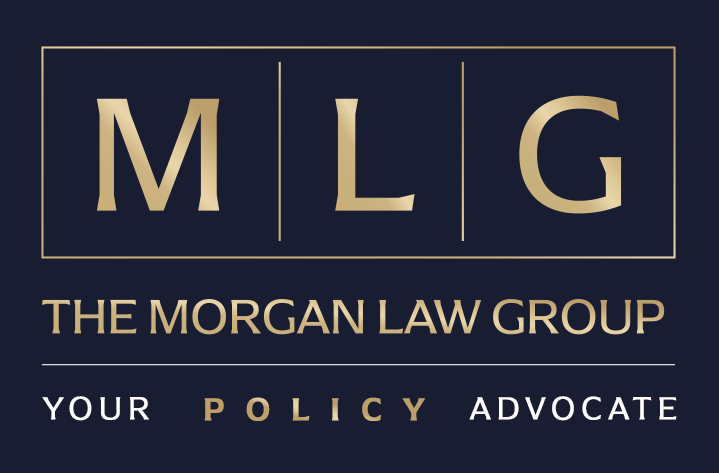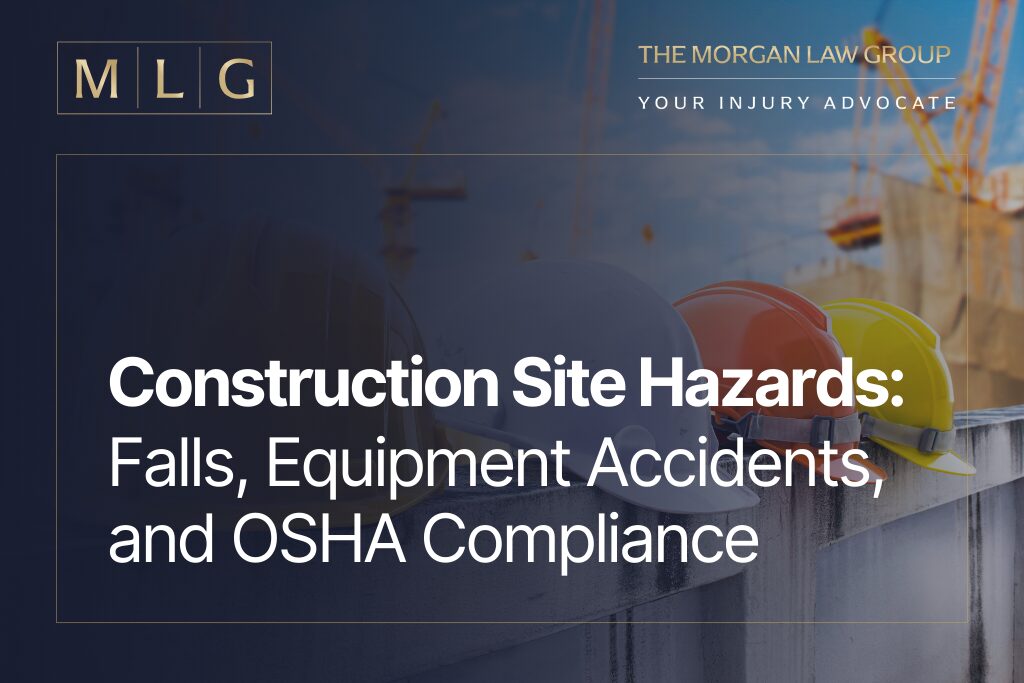Construction is a vital part of Florida’s economy, but it’s also one of the most dangerous industries. Every day, construction workers face a wide range of hazards that can lead to serious injuries or even fatalities.
The Occupational Safety and Health Administration (OSHA) has established stringent regulations to protect workers and minimize the occurrence of accidents. Understanding these hazards and complying with OSHA regulations is crucial for both employers and employees in the construction industry.
At The Morgan Law Group, our experienced Florida construction accident attorneys are committed to advocating for injured workers and helping them obtain the compensation they deserve.
OSHA Construction Site Requirements
The Occupational Safety and Health Administration (OSHA) plays a pivotal role in ensuring construction site safety. OSHA’s stringent regulations are designed to mitigate the multitude of risks found in construction environments.
Here are some key areas covered by OSHA regulations:
- Fall Protection: OSHA requires that all construction sites provide proper fall protection systems. This includes installing guardrails, safety nets, or personal fall arrest systems whenever workers are exposed to fall hazards. Employers must also train workers on how to use these systems effectively.
- Scaffolding Safety: To prevent scaffold-related accidents, which are among the most common causes of workplace injuries, scaffolds must be properly constructed, maintained, and inspected regularly. This ensures they can support the expected load and are stable under working conditions.
- Hazard Communication: Proper identification and communication of hazards are mandatory. Employers must inform and train their workforce about the potential risks in their work environment and how to use the necessary personal protective equipment to safeguard themselves.
- Excavation Safety: For work involving trenches or excavations, OSHA mandates that these areas be appropriately shored or sloped. This regulation is crucial to preventing cave-ins, one of the most lethal hazards in construction work.
- Electrical Safety: Compliance with OSHA standards for electrical safety is essential to prevent shocks and fires. This includes ensuring all electrical equipment and installations are performed according to safety specifications and are regularly inspected.
- Personal Protective Equipment (PPE): Employers are required to provide workers with suitable personal protective equipment. This could range from hard hats and safety glasses to gloves and steel-toed boots, depending on the job’s requirements.
Compliance with OSHA’s rigorous safety standards is not just a legal obligation but a fundamental aspect of operational integrity in the construction industry.
Hazards in Construction Sites in Florida
Construction sites are inherently filled with multiple risks, each contributing to a hazardous work environment. These hazards can lead to serious injuries or even fatalities, underscoring the importance of strict adherence to safety protocols.
Here are the common dangers faced by construction workers in Florida:
- Falls: Falls are the leading cause of fatalities in construction. They commonly occur from elevated platforms, roofs, scaffolds, or ladders. Without proper fall protection measures, such as safety nets, guardrails, or personal fall arrest systems, workers are at significant risk of severe injury or death.
- Struck-By Objects: This type of incident can be extremely dangerous and occurs when workers are hit by falling, swinging, or rolling objects. Construction sites are dynamic environments where workers must navigate moving equipment and vehicles, tools dropped from above, and swinging loads. Ensuring that all materials are securely stored and that safety barriers are in place can mitigate these risks.
- Caught-In/Between Hazards: Workers can find themselves caught in or compressed by equipment and objects, or struck, caught, or crushed in collapsing structures. This category also includes trench/excavation work, which carries its own risks of cave-ins and collapses. Proper training and protective systems are crucial to prevent such accidents.
- Electrical Hazards: Electrocution is a significant risk on construction sites. It can occur through contact with overhead power lines, live wires, or faulty electrical equipment. Ensuring that all electrical systems are up to code, that workers maintain a safe distance from potential electrical sources, and that proper grounding practices are followed are essential preventive measures.
- Exposure to Hazardous Materials: Many construction projects involve materials that can be harmful if mishandled. Workers might be exposed to asbestos, silica dust, lead, or other dangerous chemicals. These substances can pose serious long-term health risks, including respiratory problems and other serious diseases. It is crucial to implement strict handling procedures, provide appropriate protective equipment, and conduct regular health screenings for those exposed to such materials.
Handling situations after hazards in construction sites requires vigilance and a commitment to safety from both employers and employees. If you’ve been injured in a construction site accident, consulting a skilled construction accident attorney can help you navigate the legal process effectively.
Filing Claims for Injuries Caused by Construction Hazards
OSHA compliance is not only a legal requirement but also a moral imperative. By adhering to OSHA regulations, employers can create a safer work environment, reduce the risk of accidents, and protect their most valuable asset – their employees
If you have been injured in a construction site accident in Florida, you may be entitled to compensation for your medical expenses, lost wages, and pain and suffering. The process of filing a claim can be complex, and it is crucial to seek legal representation from an experienced Florida construction accident attorney. A skilled attorney can investigate the accident, gather evidence, negotiate with insurance companies, and represent your interests in court if necessary.
When accidents occur, construction workers in Florida have the right to seek compensation for their injuries. The process begins with reporting the injury to the employer immediately, followed by seeking medical attention. Documentation from these first steps is crucial in building a strong compensation claim.
The claims process can be challenging without legal guidance. This is where The Morgan Law Group steps in. As experienced Florida construction accident attorneys, we understand the intricacies of construction law and workers’ compensation claims.
Contact us today to schedule your free consultation. We ensure that every client understands their rights and the legal avenues available to them. From initial consultation to final resolution, we stand by our clients, advocating for their best interests and striving to achieve the best possible outcome.

